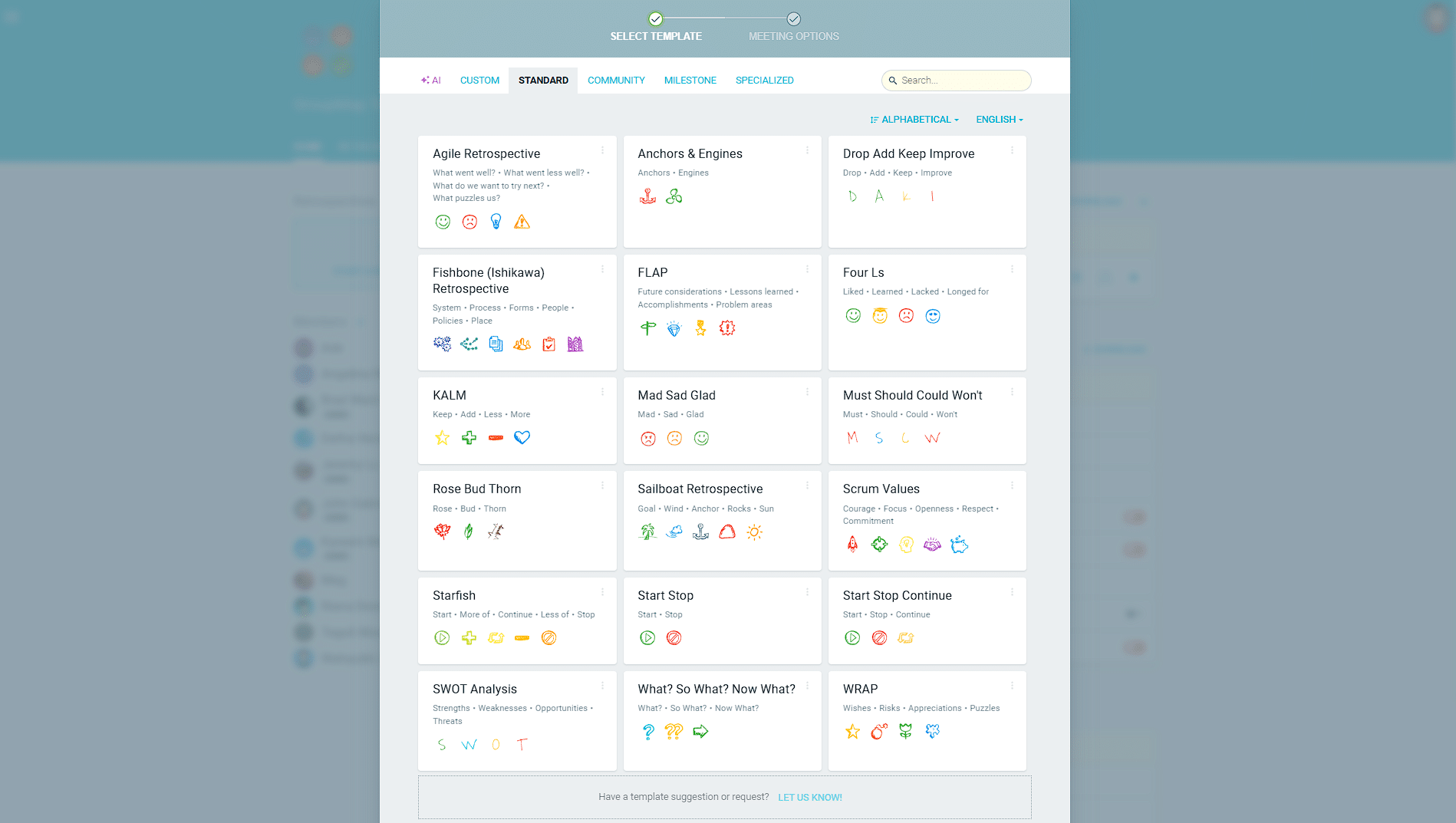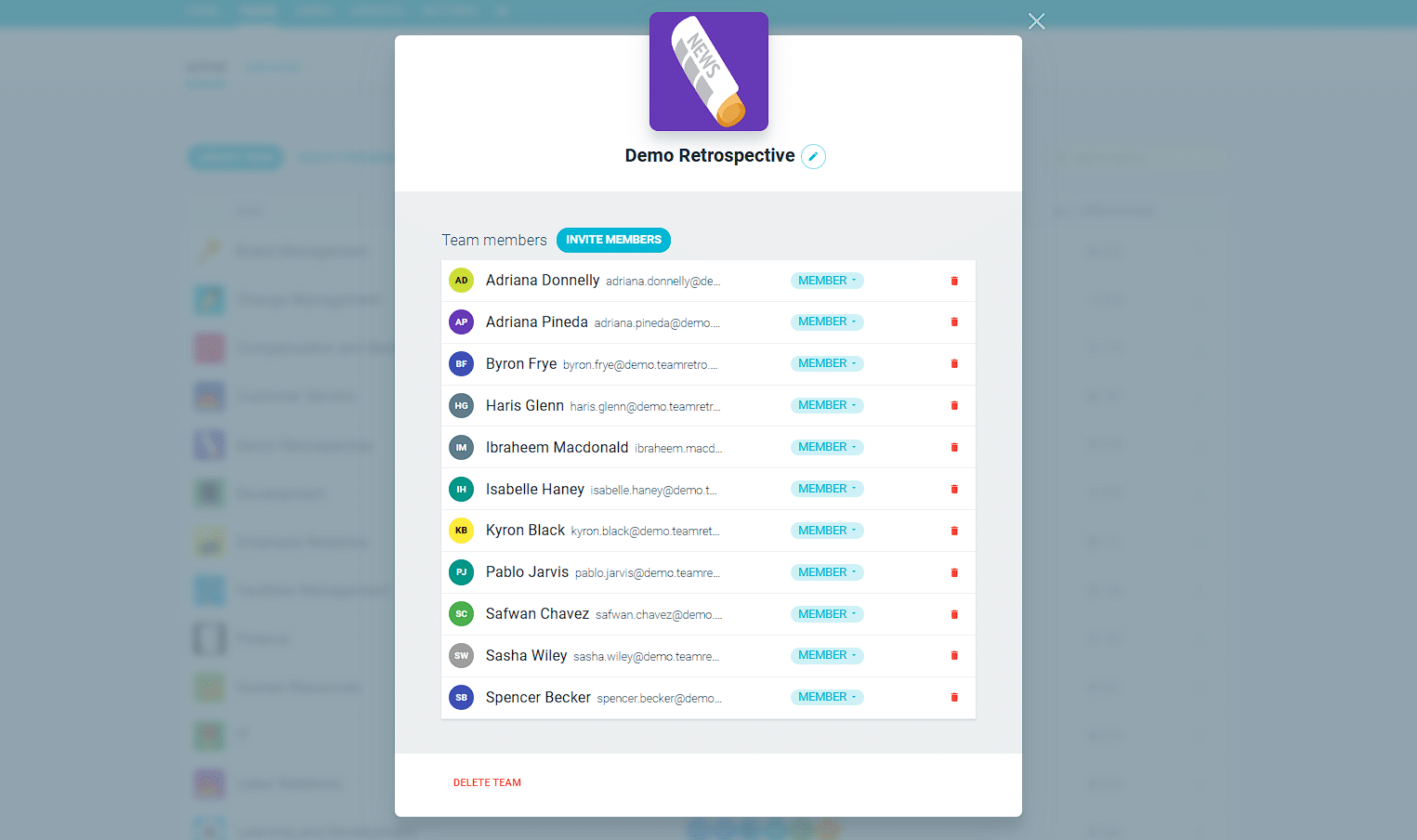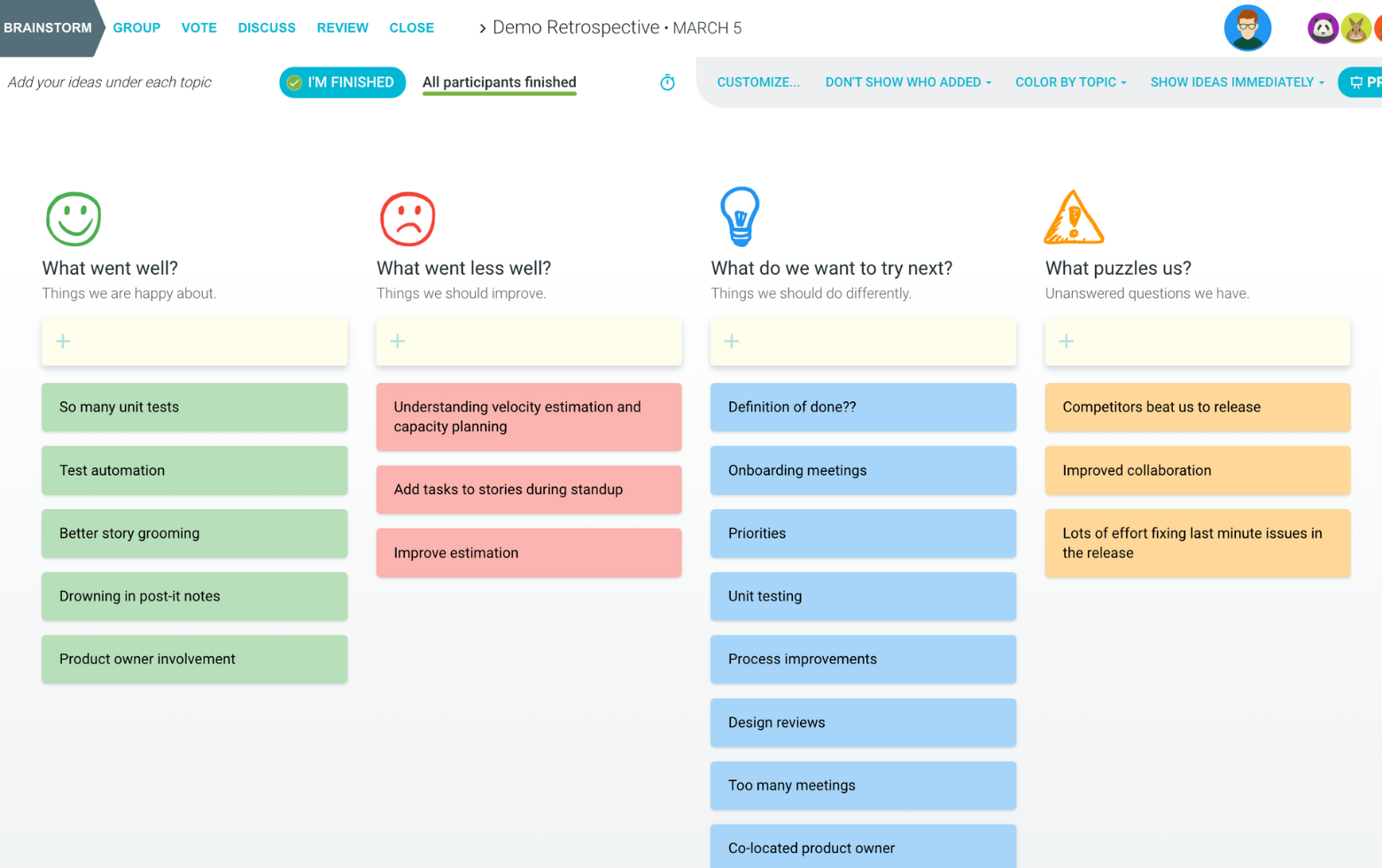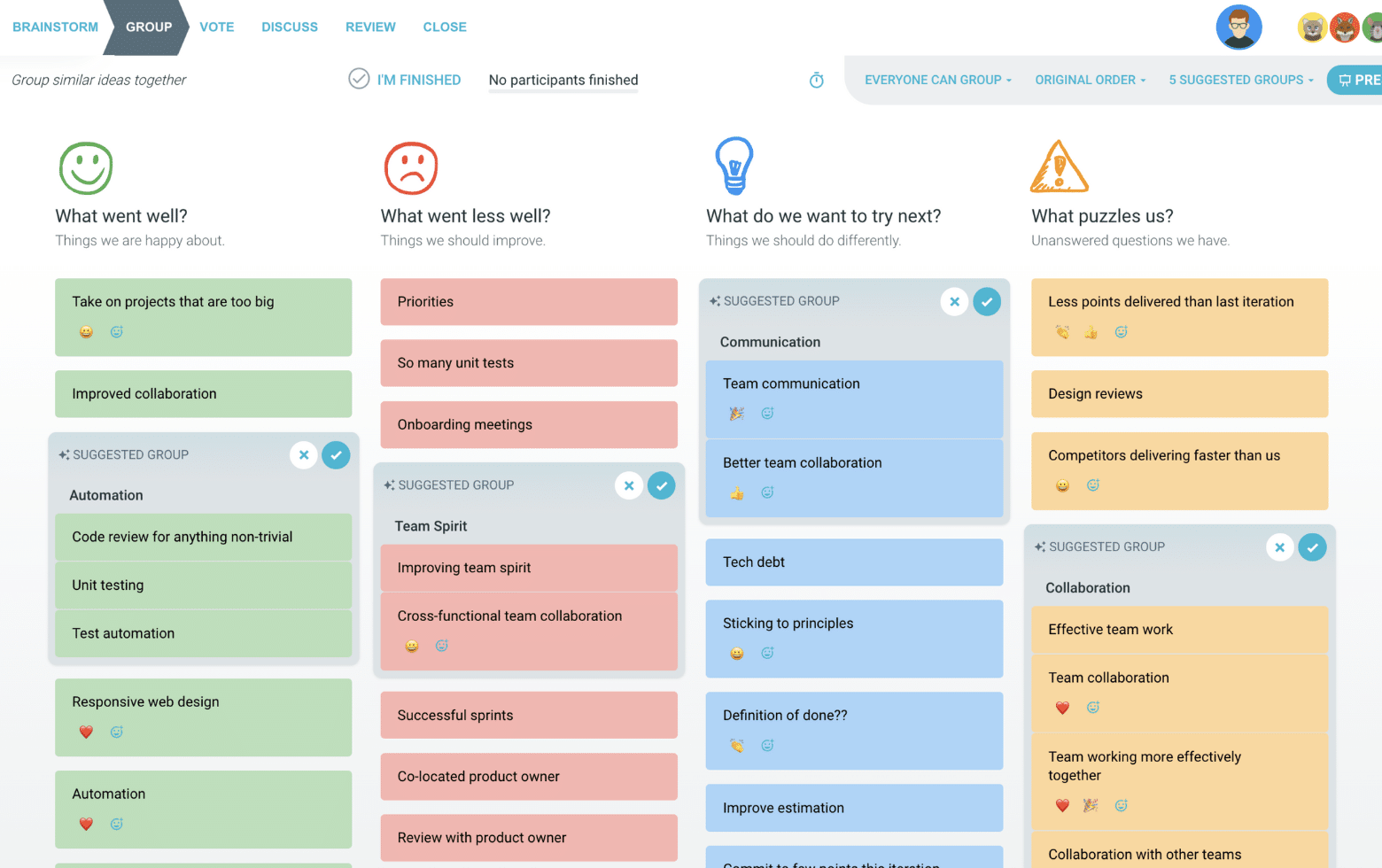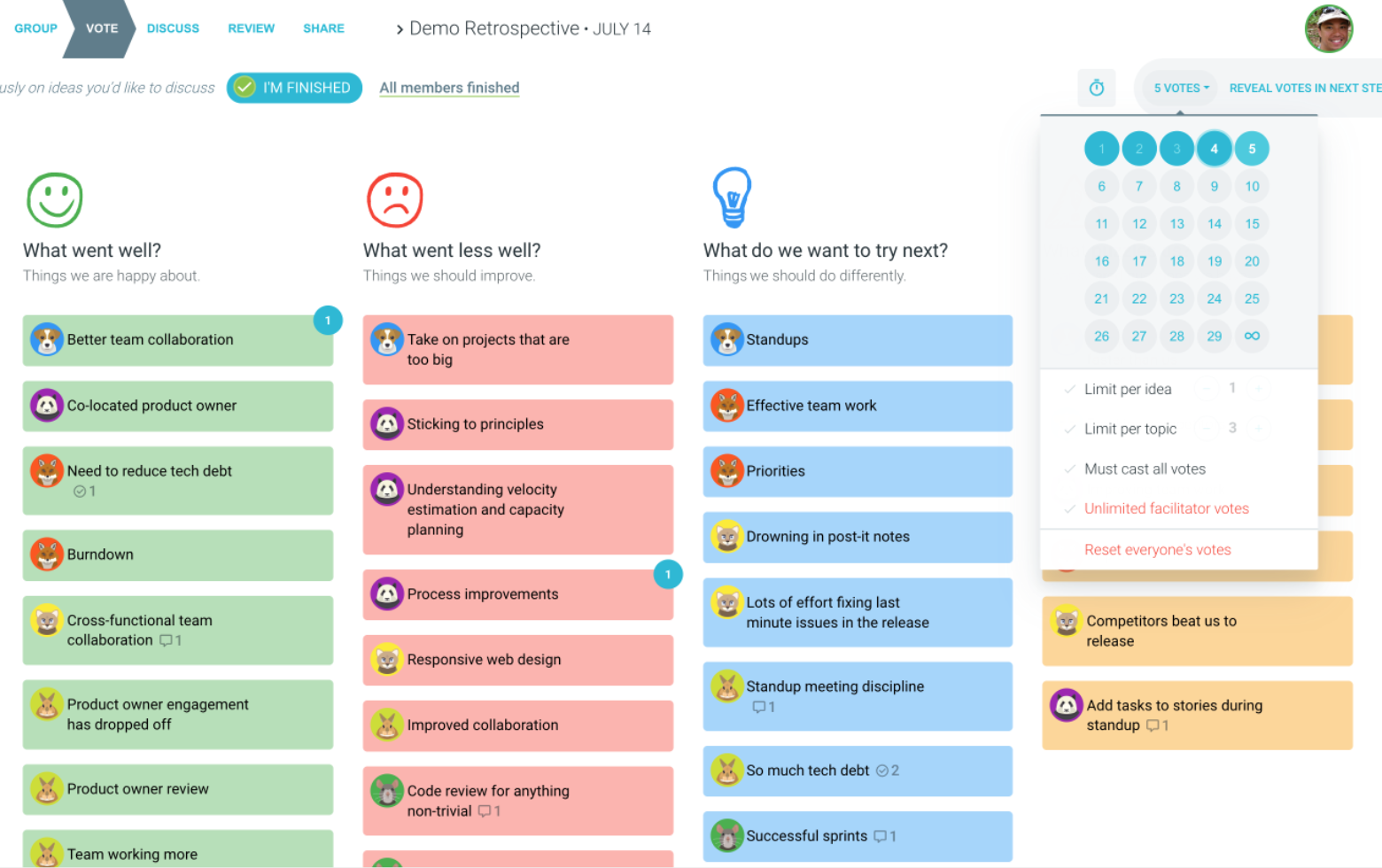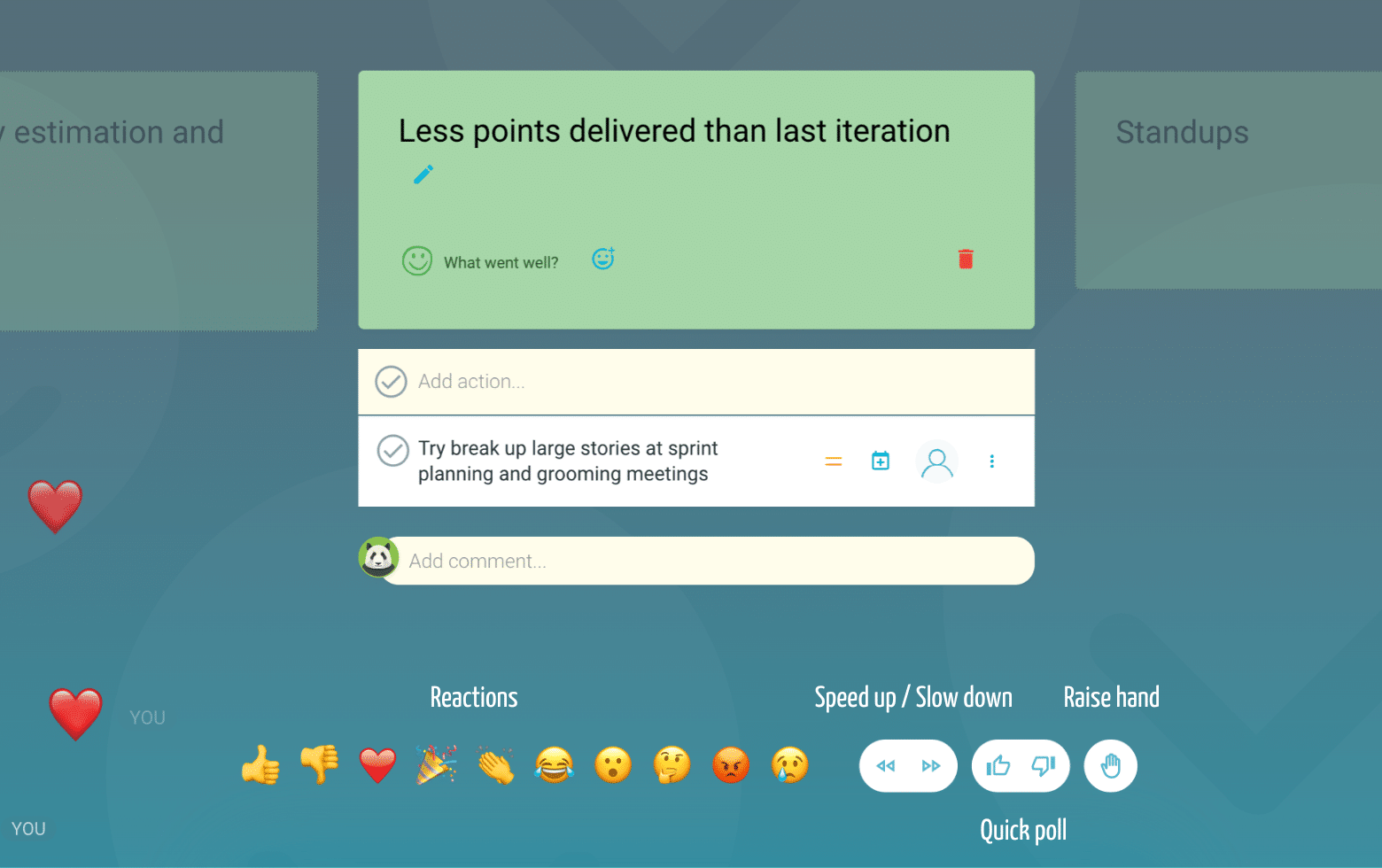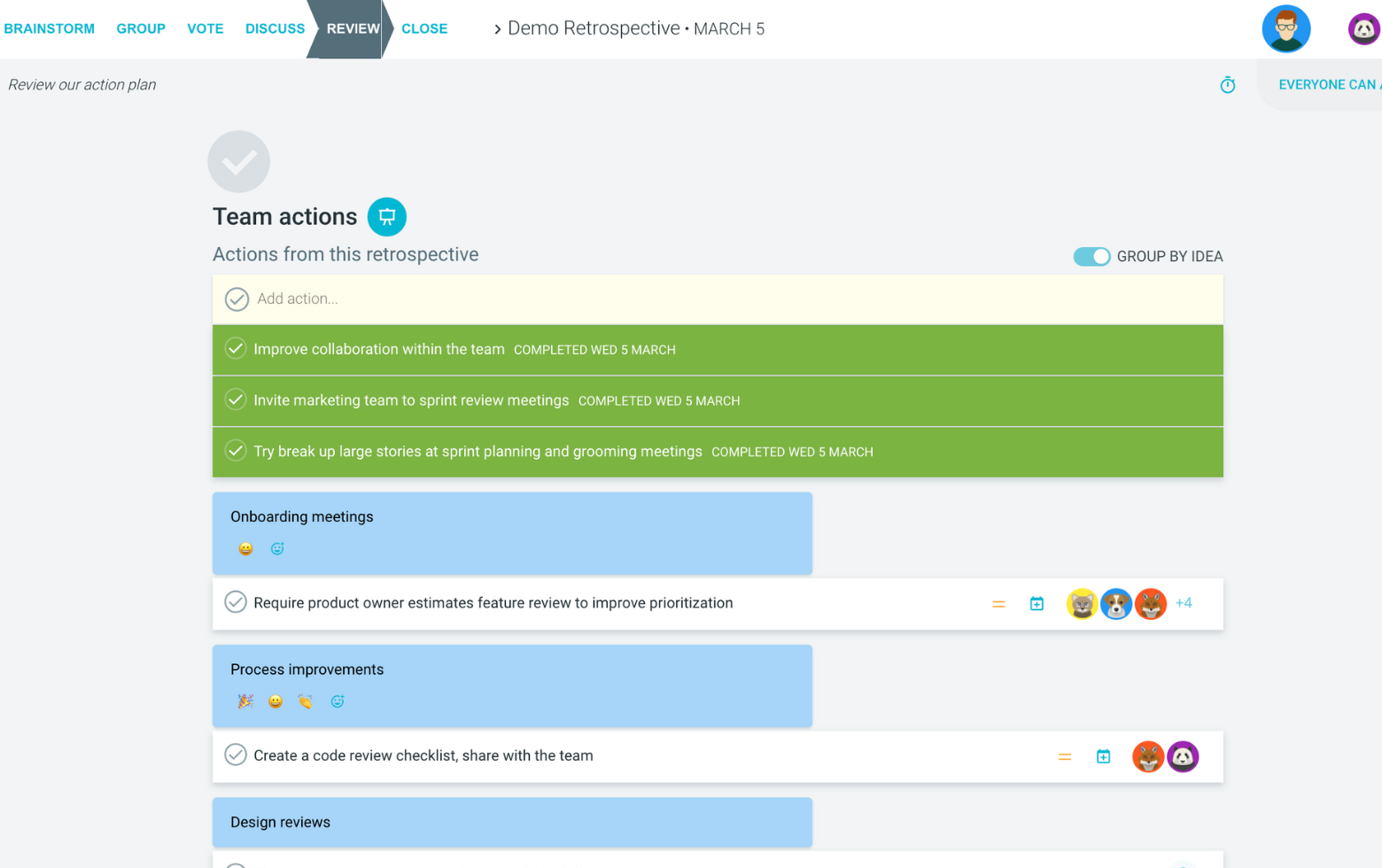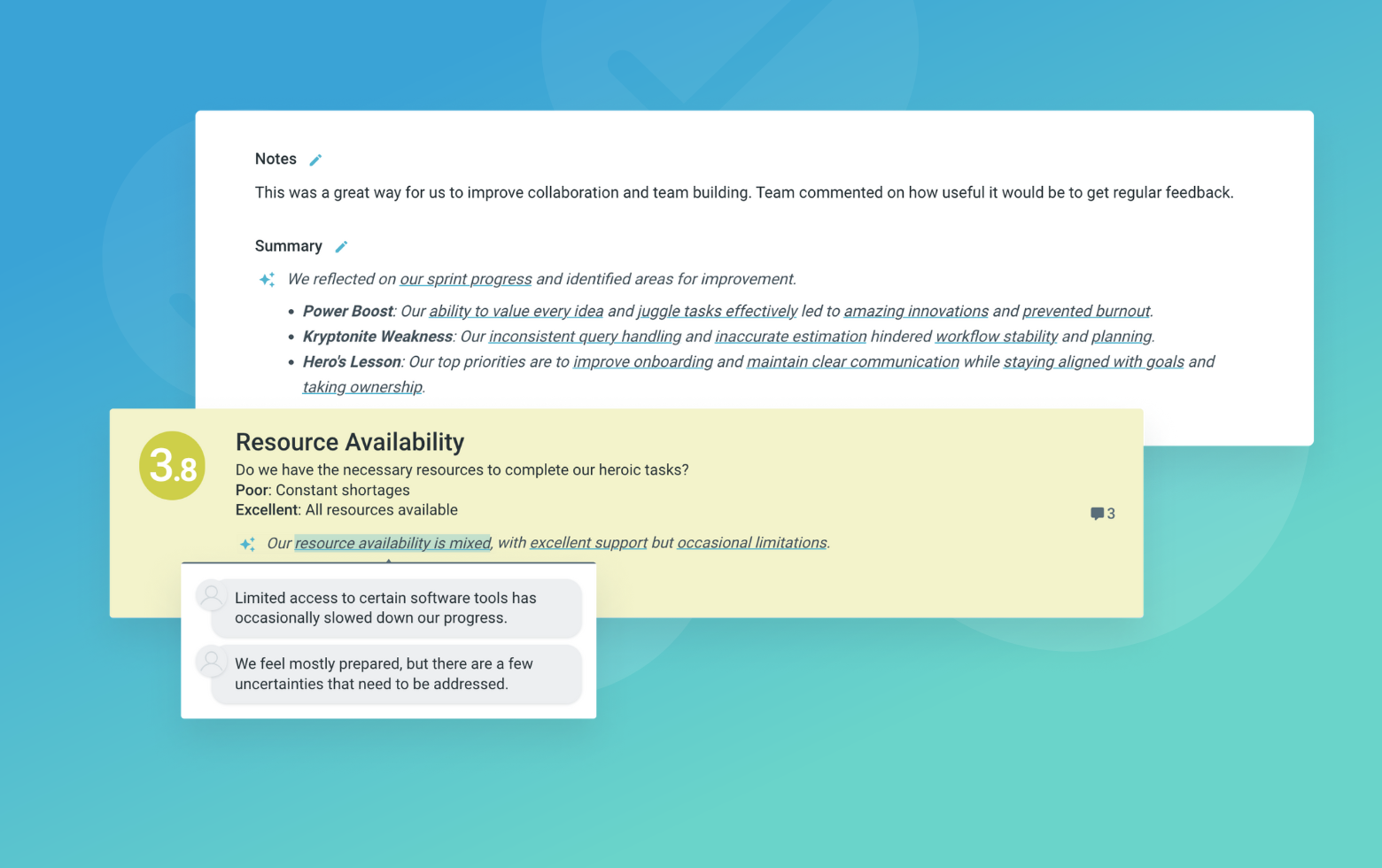The Three Little Pigs retrospective is a creative and engaging format that uses the classic children's story as a metaphor for evaluating team practices and processes. By categorizing feedback into houses of straw, sticks, and bricks, teams can identify weak points, areas needing reinforcement, and strong foundations in their work.
This retrospective framework encourages teams to think critically about the durability and sustainability of their practices. The house of straw represents fragile or temporary solutions, the house of sticks indicates partially robust processes that need strengthening, and the house of bricks highlights solid, reliable practices worth maintaining.
Originally adapted from the beloved fairy tale, this retrospective format helps teams identify varying levels of stability in their work processes while maintaining a playful, accessible approach to serious improvement discussions.
What is The Three Little Pigs Retrospective
House of Straw
Things that could easily fall apart
Guide the team to identify practices, processes, or solutions that are temporary or fragile. These might be quick fixes or unstable workarounds that need more robust solutions. Encourage honest discussion about why these elements are vulnerable and what risks they pose.
House of Sticks
Things that are working but could be improved
Focus on elements that show promise but need reinforcement. These are processes or practices that have good foundations but require additional structure or refinement to become truly robust. Encourage discussion about specific improvements needed.
House of Bricks
Things that are strong and stable
Identify and celebrate the team's strongest practices and processes. These are the elements that consistently work well and provide value. Discuss what makes these successful and how similar approaches might strengthen other areas.
The Big Bad Wolf
What threats or challenges are we facing?
Help the team identify external pressures, risks, or challenges that could threaten their success. This could include market forces, technical debt, or organizational changes. Focus on constructive identification of threats rather than complaints.
Suggested icebreaker questions
- If you could build a house from any material in the world, what would you choose and why?
- What's your favorite childhood story and what lesson did it teach you?
Ideas and tips for your retrospective meeting
- Start by explaining the metaphor clearly and how it relates to team practices
- Encourage participants to think about long-term sustainability rather than just immediate solutions
- Use the wolf category to address external threats constructively rather than as a complaint session
- Consider using visual aids or storytelling elements to maintain the theme and engagement
- Balance the serious nature of process improvement with the playful theme of the retrospective
- Set aside time to discuss how to transform 'straw' and 'stick' items into 'brick' solutions
.
How to run effective meetings with TeamRetro
Start Your Session in a Click
Log into TeamRetro and choose your template. Customise questions and the workflow to create your perfect retro for your team.
Create Your Team Easily – No Separate Accounts Needed
Brainstorm Individually – Free From Bias
Smart Grouping for Faster Insights
Fair, Flexible, and Fast Voting
Engage, React, and Capture Key Insights
Walk your team through ideas one by one with Presentation Mode. Stay in sync, spark real-time discussions, and capture feedback with comments, live reactions, and polls—all in one place.
Turn Ideas Into Action
Propose next steps with team buy-in, get AI-powered action suggestions, and keep everything in one place. Committed actions sync to your personal dashboard and integrate with your workflow tools—keeping you on track.
Save, Share, and Stay on Track
Get quick AI-powered summaries, add facilitator notes, and store retrospectives in your library for easy access. Schedule your next session and track published actions to keep your team accountable at the next retro.
Turn Team Data into Actionable Insights
Uncover trends, common themes, and key engagement metrics at a glance. Track sentiment shifts, analyze conversations, and monitor completed actions to drive continuous improvement.
